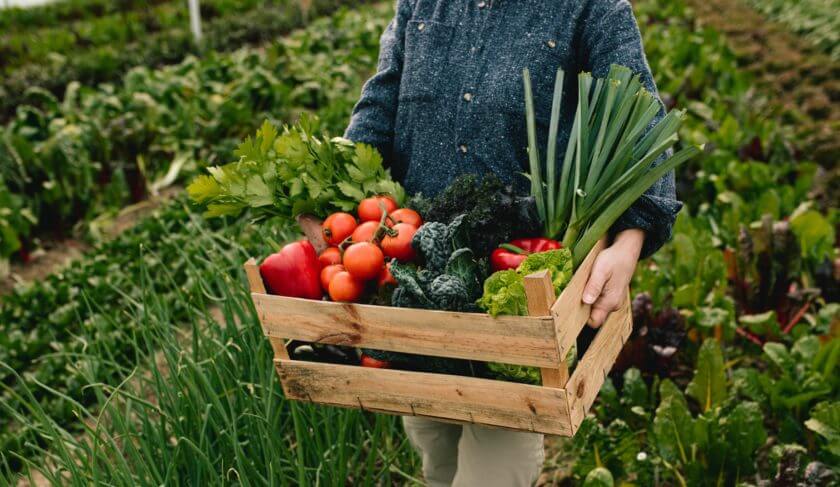
When we think about Earth Day and changes we can make to our daily lives to become more environmentally friendly, we might not immediately think of the cost savings that could accompany our efforts. While the initial investment for some green alternatives can be more expensive upfront, we promise that in the long run you’ll save money while you’re also saving the planet. We count that as a total win-win. Here’s a look at 10 of HerMoney’s favorite ways to go green while saving our own greenbacks.
1. Drive a Hybrid or Electric Car
Are you motoring around town in a Prius, a Nissan Rogue, a Ford Fusion, or maybe even a Tesla? If so, you’re saving money on gas and lessening our country’s dependence on fossil fuels. We salute you! According to fueleconomy.gov, driving a 2019 Toyota Prius will save you more than $4,000 in fuel costs over 5 years, compared to driving an average new vehicle. (FYI, HerMoney’s Editor-in-Chief Kathryn Tuggle has driven a Prius for 10 years, and she estimates she’s saved about $1,000 a year on gas… Woot!)
2. Switch from paper towels to cloth napkins
Sure, it’s easy to just grab a paper towel or two off the roll when you need to wipe something up, but those towels come at a cost, both to your monthly budget and to the planet. Try switching to using tea towels around the house instead of paper towels in order to save money and the planet. They offer similar absorbency while being machine washable. There’s also an adorable Etsy option we love, of reusable “paperless paper towels”.
3. Donate your unused items to give them another life
Cleaning out your closet is not only great for reducing your clutter, you’re actually helping the environment when you sell or donate the stuff that no longer “sparks joy” in your life. Keeping those old kids toys, DVD players and clothes out of the landfill reduces our plastic footprint and helps cut back on the 292 million tons of trash Americans dispose of each year. The average American produces 4.9 pounds of trash per day, according to the EPA. Plus, if you donate your items to charity, you’ll reap tax benefits as well.
4. Switch to a reusable water bottle
Almost every one of us has bought a bottle of water when we’ve been thirsty and on the go, but that dollar here or there can really add up over the course of a year. According to Earthday.org, the average American spends $266 on bottled water annually. Not only that, you significantly contribute to your plastic footprint (You can calculate yours here!) So why not do the oceans and your wallet a favor and pick up a reusable water bottle. You can even grab a fun reusable cup with a lid if you prefer 🙂
5. Use reusable shopping bags
How many times have you forgotten to take your reusable bags to the store? Yeah, us, too. But how can these bags help you save money, exactly? There are a handful of states where using plastic bags comes with a per-bag fee — even when ordering take-out. In places like California, New York and Washington, D.C., expect to pay up to 10 cents a bag if you leave yours in the car or at home. If you aren’t careful, that can quickly add up, especially when you have a cart full of groceries.
6. Try your hand at gardening or visit your farmer’s market
Do you have a green thumb, or have you developed one during the pandemic? According to a survey from Axiom, more than 70% of people between the ages of 19 to 39 said they spent more time outside gardening in 2020. Not only is gardening and growing your own fruits and vegetables an enjoyable pastime, you can save serious money over time because you’re reducing your need to buy fresh items at the grocery store.
Of course we understand that not everyone has space for flower beds, which is why we recommend checking out your local farmer’s market. You’ll be able to tap into what’s in season, and will usually pay less because you aren’t having to pay for the cost of transporting that produce long distances, or space on store shelves. So, not only are you supporting your local farmer, you’re buying produce with a reduced carbon footprint. Go you! (And your reusable farmer’s market tote!)
7. Switch to solar electricity
If you’re lucky enough to live in a sunny state, it might be worth looking into solar panels to power your home. While the upfront costs for purchase and installation can be pricey, in a few years’ time, many people with solar can be paid by the electric company for the excess power they’re generating — that’s right: the electric company can pay YOU, taking saving money while saving the planet one step further. But even if that never happens, if you’re able to cut back on the electricity you were buying from the power company, you’ll reduce those monthly bills. And given that one-third of the energy generated in the U.S. comes from coal, you’ll also be keeping our air cleaner.
8. Use reusable sturdy containers to store and transport food instead of Ziploc bags
We get it — reaching into your go-to box of Ziploc bags is easy, but the impact it has on the environment is steep. By some estimates, it will take up to 500 years for a plastic bag to decompose. Swap out those bags for a reusable version (we love these from Bumkins), and you’ll be keeping the plastic out of the landfill at the same time you’re keeping cash in your pocket.
9. Drive less, walk more (or carpool/take public transportation when you can!)
As we mentioned in our first tip, driving has a significant impact on the environment. Another way to cut back on those greenhouse gases and fossil fuels is to look into ways to use them (or produce them, as the case may be) less. Whether you’re walking, taking public transportation or carpooling, you’ll be helping the environment and spending less on gas.
10. Buy used
Fast fashion certainly helps us keep up with the latest trends, but it has an enormous negative impact on the planet — from what it’s made of, to how it’s produced and even how it’s shipped to our stores or our front door… And the thing about fast fashion is that while it seems cheap enough to help us keep up with the Joneses, it often ends up costing more in the long run because the items don’t last for more than a few wearings. A great way to cut back on your clothing budget is to buy used, at your favorite thrift shops, charity shops, or consignment stores. Some of us here at HerMoney have donated items with the tags still on after buying them and missing the return window… Maybe you’ve even been there, too? The point is that we’re definitely not the only ones who have made this mistake, so get thee to a thrift store in order to get a deal on higher quality clothes (and sometimes brand new!) clothing without breaking the bank.
This Earth Day (and every day!) we hope you’ll give some of these lifestyle changes a try — it really is the small steps that can make a big difference, both in terms of saving money and saving the planet.
MORE ON HERMONEY:
- 9 Things Most of Us Don’t Do At the Grocery Store (But Could Save Us $100 or More)
- 6 Ways to Find the Groceries You Need When Shelves Are Empty
- Save Money On Groceries By Ignoring These Shopping Myths
Get more money saving + money making tips delivered right to your inbox: Subscribe to HerMoney today!







